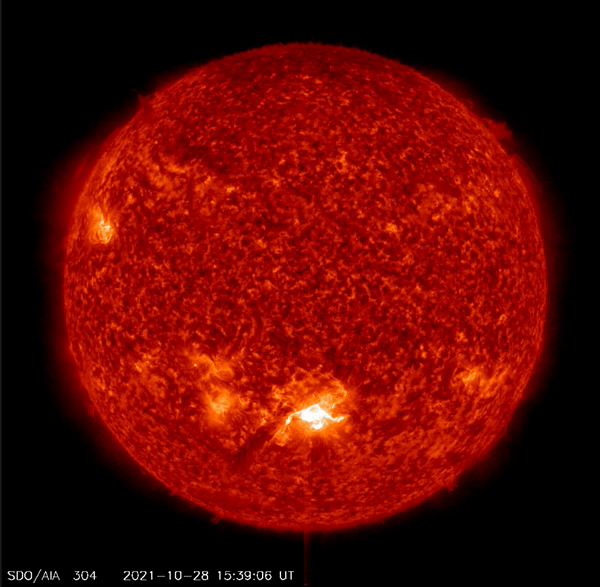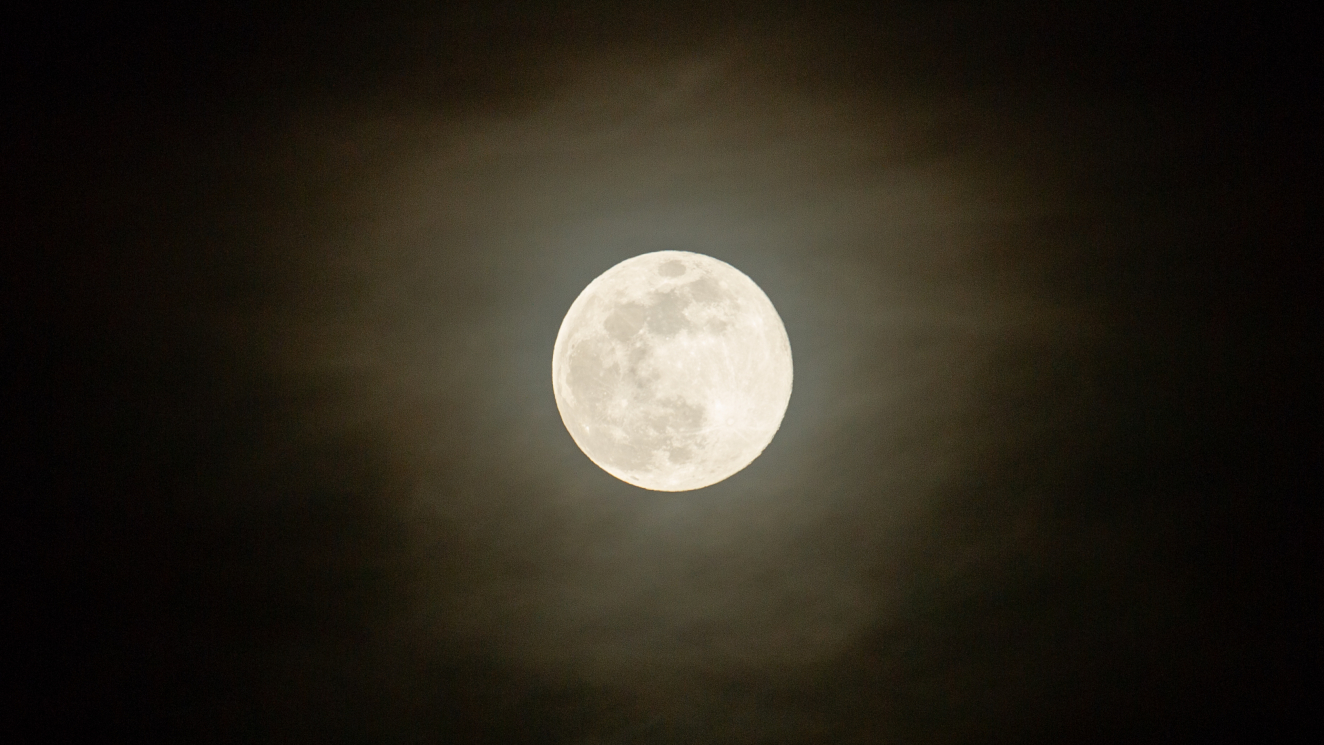Sun fires off major solar flare from Earth-facing sunspot
Solar particles blasted out in association with the flare could hit Earth tomorrow (Oct. 29).
Editor's note: The X1 solar flare of Oct. 28 could spawn Halloween auroras visible from New York, Idaho, Illinois, Oregon, Maryland and Nevada, according to NASA. The most well-positioned places are those in Canada, [Upper Peninsula of Michigan], Alaska, Iceland, Norway and Scotland.
A major solar flare erupted from the sun on Thursday (Oct. 28) in one of the strongest storms of our star's current weather cycle.
The sun fired off an X1-class solar flare, its most powerful kind of flare, that peaked at 11:35 a.m. EDT (1535 GMT), according to an alert from the U.S. Space Weather Prediction Center (SWPC), which tracks space weather events.
The flare caused a temporary, but strong, radio blackout across the sunlit side of Earth centered on South America, the group wrote in an statement. NASA officials called the solar eruption a "significant solar flare," adding that it was captured in real-time video by the space agency's Solar Dynamics Observatory.
A coronal mass ejection from the flare, a huge eruption of charged particles, could reach Earth by Saturday or Sunday (Oct. 30-31), just in time for Halloween, SpaceWeather.com reported. The eruption could supercharge Earth's northern lights and potentially interfere with satellite-based communications.
Related: The sun's wrath: Worst solar storms in history
"POW! The sun just served up a powerful flare," NASA officials wrote on Twitter alongside a photo of the flare.
Breaking space news, the latest updates on rocket launches, skywatching events and more!
Solar flares are massive eruptions of radiation from the sun that send charged particles streaming outward from the star. Flares are classified in a letter system, with C-class storms being relatively weak, M-class more moderate and X-class flares as the strongest.
"X-class denotes the most intense flares, while the number provides more information about its strength," NASA officials explained in a statement. "An X2 is twice as intense as an X1, an X3 is three times as intense, etc. Flares that are classified X10 or stronger are considered unusually intense."
When they are aimed directly at Earth, the most powerful X-class flares can interfere with radio and satellite communications and supercharge the planet's aurora displays. They can also be accompanied by a massive eruption of solar particles, called a coronal mass ejection. Such eruptions send charged particles out from the sun at a whopping 1 million mph (1.6 million kph) or more, and typically take a few days to reach Earth.
Thursday's flare appeared to also spawn a coronal mass ejection, SWPC officials said.
Thursday's flare originated from a sunspot called AR2887 currently positioned in the center of the sun and facing the Earth, based on its location. The sunspot was responsible for two moderate M-class solar flares earlier in the day, according to SpaceWeather.com, which also tracks daily sun weather.
The coronal mass ejection from a Tuesday flare up of AR2887 could deliver a "glancing blow" to Earth sometime on Friday (Oct. 30), SpaceWeather.com reported.
A new active sunspot, called AR2891, also recently fired off an M-class flare as it rotated toward the Earth-facing side of the sun. It is currently making its way across the face of the sun, as seen from Earth, a process that will take about two weeks.
The sun is in the early days of its current solar activity cycle, each of which lasts 11 years. The current cycle, called solar cycle 25, began in December 2019.
Correction: An earlier version of this story stated the X1 solar flare was the biggest of the current cycle. An X1.6 flare on July 3 was stronger. This story was also updated with new comments from the Space Weather Prediction Group and NASA, who released a refined peak time for the solar flare.
Email Tariq Malik at tmalik@space.com or follow him @tariqjmalik. Follow us @Spacedotcom, Facebook and Instagram.

Tariq is the award-winning Editor-in-Chief of Space.com and joined the team in 2001. He covers human spaceflight, as well as skywatching and entertainment. He became Space.com's Editor-in-Chief in 2019. Before joining Space.com, Tariq was a staff reporter for The Los Angeles Times covering education and city beats in La Habra, Fullerton and Huntington Beach. He's a recipient of the 2022 Harry Kolcum Award for excellence in space reporting and the 2025 Space Pioneer Award from the National Space Society. He is an Eagle Scout and Space Camp alum with journalism degrees from the USC and NYU. You can find Tariq at Space.com and as the co-host to the This Week In Space podcast on the TWiT network. To see his latest project, you can follow Tariq on Twitter @tariqjmalik.

